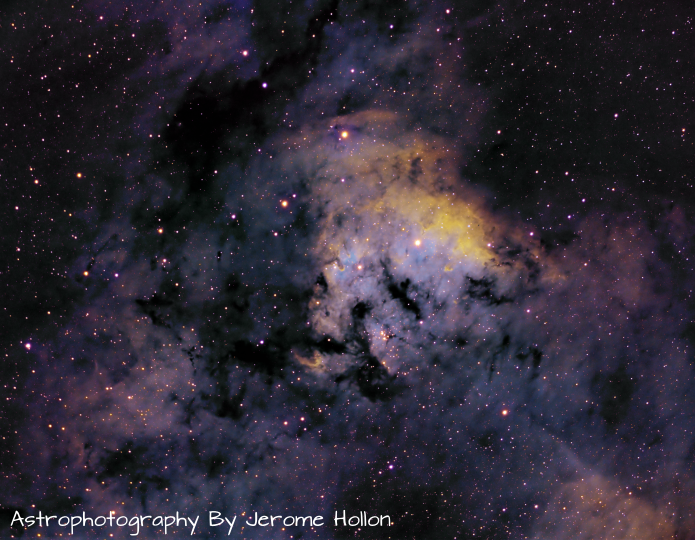NGC 7822 in Cepheus
This captivating image showcases NGC 7822, a star-forming region located in the constellation Cepheus, about 3,000 light-years away from Earth. NGC 7822 spans an area of about 40 light-years across and it is illuminated by the light of several young, massive stars. The region is composed of a mix of gas and dust, which is being compressed and ionized by the intense radiation from the nearby stars.
NGC 7822 is one of the most active star-forming regions known, and it contains several young stellar clusters. The most prominent of these clusters is Berkeley 59, which is home to over 100 young stars. NGC 7822 is also known for its complex structure, which includes several pillars and fingers of gas and dust. These structures are thought to be the result of the intense radiation and stellar winds from the young stars in the region, which are sculpting the surrounding gas and dust into intricate shapes.
It is home to one of the youngest known massive stars, which is estimated to be only a few hundred thousand years old. The region is also known for its “elephant trunk” structures, which are long, narrow pillars of gas and dust that resemble the trunks of elephants.
NGC 7822 was first catalogued by the astronomer Edward Emerson Barnard in 1893.
